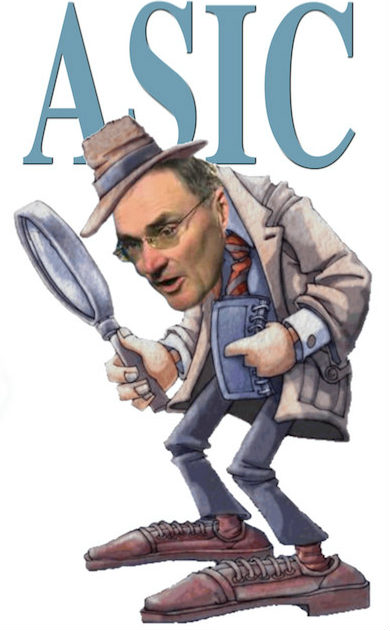

Questions on Notice to Shawn Richard
The Parliamentary Joint Committee in it's Inquiry into the Collapse of Trio Capital Limited, sent Shawn Richard 10 questions on Notice despite that he was charged in respect of the offences against s1041G and s1041E of the Corporations Act 2001. Mr Richard's answers are part of the PJC Report May 2012 as Appendix 3 - Responses from Mr Shawn Richard.
Question 7 reflects that the PJC were uncertain where the epicentre of the fraud took place. The PJC ask:
7. How difficult was it to establish the fraudulent investment scheme? Did any of the regulatory checks and balances, including those listed below, make the perpetration of the fraud more difficult? Did it make it easier?
• Obtaining an AFSL
• Anti-money laundering / Proceeds of Crime checks
• PDS
• Trustees
• Custodians
• Auditors
• Directors
• Financial advisers
• Research Houses
• APRA
• ASIC
Participating in aspects of the scheme did not make the above mentioned regulatory checks and balances overly difficult to overcome. The main reason for this is that the vast majority of all checks and balances relating to Trio Capital and more specifically the ASF, was mainly relating to the fund's activities within Australia.
Therefore, the establishment of the ASF as a fund that invests in other overseas hedge funds resulted in the standards checks and balances becoming significantly diluted once investment funds left Australia which is where I believe the main contributing factors leading to Trio Capital's collapse occurred.
8. From your experience, what were the weak points in Australia's financial services regulatory framework?
Upon reflection, one of the weaknesses in Australia's financial services regulatory framework was the general lack of understanding of the hedge fund space and its many complexities in terms of different structures and strategies.
More specifically, the main problems with funds such as the ASF, which invested in other hedge funds, is the general acceptance throughout the whole financial industry that certain hedge funds can be exempt from offering the same required transparency as all other asset classes. In other words, once the manager invests with a 3rd party fund manager, many layers of scrutiny, checks and balances disappear.
For example:
Still today, many fund of funds are only required to disclose their overall investment methodology in terms of selecting 3rd party fund managers.
The majority of them are unable to disclose the list of assets purchased and held by the 3rd party manager and get away by explaining the "type" of asset.
Some of them do not even disclose which managers they have selected.
This makes it very difficult for all relevant parties to make the necessary checks and balances in order to confirm whether the Australian manager is delivering on its stated strategy, risk profile and liquidity guidelines. It also makes it difficult to detect any dishonest conduct.
Although there are many successful hedge funds that do the right thing and offer great alternatives to traditional investments, considering the above observations would make it difficult in some cases to distinguish between good and bad.
The APRA guidelines on superannuation liquidity requirements within the funds management industry is not scrutinised enough. Other than with Trio Capital, I have seen many examples including retail and industry superannuation funds which do not meet the APRA's minimum liquidity requirements. They simply do a good job at convincing the regulator that they do. This was proven during the GFC and still today I'm confident I could easily identify superannuation funds that would fail the liquidity test.
10. Given your experience and knowledge of the inner workings of Trio Capital, in what way do you consider Australia's financial services regulatory framework should be altered to increase the security Australian investors and superannuation funds.
Unless the industry can force a dramatic increase in the transparency within certain areas of the hedge fund industry, there perhaps should be enforced limits or even prevention of exposure which superannuation funds can have into certain hedge funds.
As previously mentioned, if fund of hedge funds are unable to show the list of underlying assets purchased by a 3rd party manager, it will always be very difficult for all relevant parties to make the necessary checks in order to confirm whether the Australian manager is delivering on its stated strategy, risk profile and liquidity guidelines as well as detect fraud.
Stricter scrutiny regarding superannuation liquidity guidelines. Especially if the combination of hedge funds, private equity, fixed interest and unlisted property funds make up more than 25% of a superannuation portfolio which is often the case.
(Note: just because a PDS says they are liquid, it doesn't mean they are. The liquidity status represented in a PDS usually assumes minimal redemptions and does not account for unusual events causing larger redemptions like we saw in the GFC )